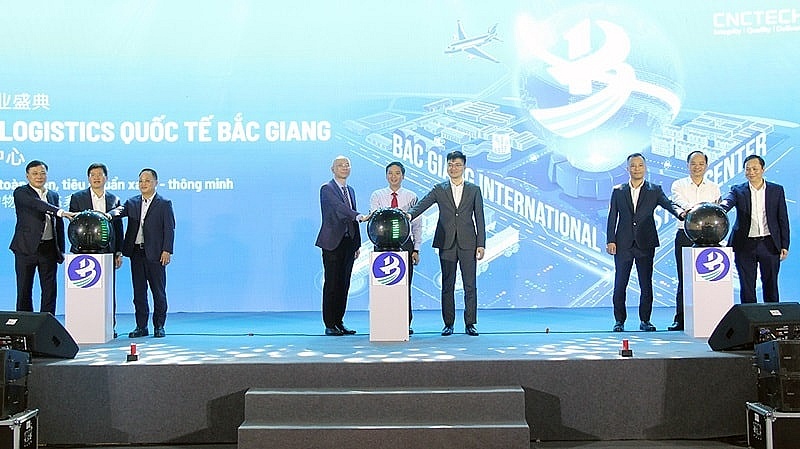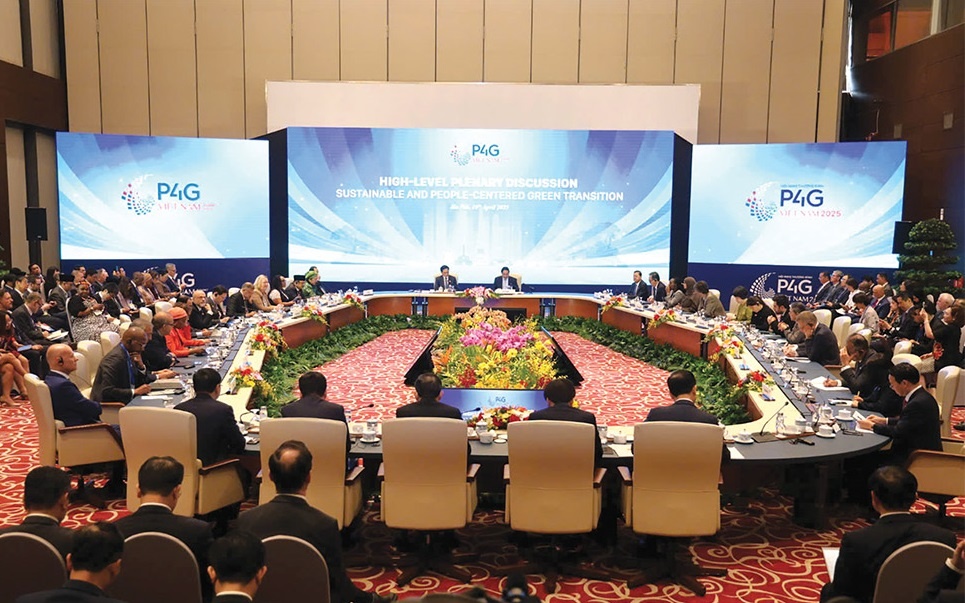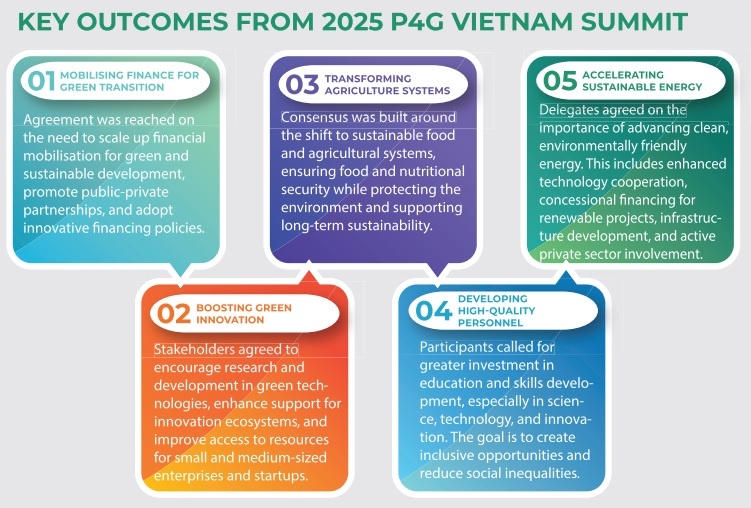Investing
Navigating risks from AI adoption
Published
10 months agoon
Developing trustworthy AI solutions is essential for senior leaders to successfully navigate the risks of rapid AI adoption and fully embrace and integrate this transformative technology. write Deloitte analysts.

Illustration on the cover of Deloitte’s new report named “AI at a crossroads: Building trust as the path to scale.
A new report co-developed by Deloitte Access Economics and Deloitte AI Institute reveals critical insights for C-suite and technology leaders on how they can develop effective artificial intelligence (AI) governance amidst accelerating adoption and growing risk managementchallenges.
The report, named “AI at a crossroads: Building trust as the path to scale”, is based on a survey of nearly 900 senior leaders across 13 Asia Pacific geographies, including six Southeast Asia geographies – namely, Indonesia, Malaysia, Philippines,Singapore, Thailand, and Vietnam – whose responses were assessed against Deloitte’s AI Governance Maturity Index to identify what good AI governance looks like in practice.
With investments in AI projected to reach $110 billion by 2028 in the Asia Pacific regionalone, it emphasizes the need for robust governance frameworks to enable businesses to adopt AI more effectively, build customer trust, and create paths to value and scale.
Commenting on the report, Dr. Elea Wurth, lead partner, trustworthy AI strategy, risk & transactions, Deloitte Asia Pacific and Australia, said, “Effective AI governance is not just acompliance issue; it is essential for unlocking the full potential of AI technologies.”
Wurth noted that Deloitte’s findings reveal that organizations with robust governance frameworks are not only better equipped to manage risks but also experience greater trust in their AI outputs, increased operational efficiency and ultimately greater value and scale.
Navigating risks from AI adoption
Amongst Southeast Asia geographies covered in the survey, security vulnerabilities, including cyber or hacking risks, were most commonly cited as top concerns associated with the risk of using AI.
Other top concerns include those pertaining to privacy, such as confidential or personal data breaches and the invasion of privacy due to pervasive surveillance.
This is a trend that was especially pronounced for Singapore, with nearly all respondents indicating security vulnerabilities (96%) and privacy breaches (94%) as areas of concern – and tracks closely with the finding that 35% of Singapore respondents also reported an increase in incidents at their organizations in the last financial year, the highest amongst all Southeast Asia geographies.
Chris Lewin, AI & data capability leader, Deloitte Asia Pacific and Southeast Asia, said, “The rapid pace and scale of AI adoption has meant that organizations are encountering AI-related risks in real-time as they experiment and roll out the technology. Given that Southeast Asia and the wider Asia Pacific region are hotbeds for cyberattacks, business leaders are understandably most concerned about security vulnerabilities, which can arise from the AI solutions themselves, the vast amount of data used by these solutions, or a combination of both.
“What we have found, however, is that organizations who have implemented incident responses and remediation plans are less likely to be concerned about such risks. This highlights the critical importance of effective governance to address concerns about AI use.”
Building trustworthy AI
Developing trustworthy AI solutions is essential for senior leaders to successfully navigate the risks of rapid AI adoption and fully embrace and integrate this transformative technology.
Deloitte’s Trustworthy AI Framework outlines seven dimensions that are necessary to build trust in AI solutions which are transparent and explainable, fair and impartial, robust and reliable, respectful of privacy, safe and secure, responsible, and accountable.
This framework and criteria should be applied to AI solutions from ideation through to design, development, procurement, and deployment.
The survey reveals that across Asia Pacific, organizations with mature AI governance frameworks report a 28% increase in staff using AI solutions, and have deployed AI in three additional areas of the business.
These businesses achieve nearly 5 percentage points higher revenue growth compared to those with less established governance.
Key recommendations from the report include:
– Prioritize AI governance to realize returns from AI
Continuous evaluation of AI governance is required across the organization’s policies, principles, procedures, and controls. This includes monitoring changing regulations for specific locations and industries to remain at the forefront of AI governance standards.
– Understand and leverage the broader AI supply chain
Organizations need to understand their own use of AI as well as interactions with the broader ‘AI supply chain’ − including developers, deployers, regulators, platform providers, end users, and customers − and perform regular audits throughout the AI solution lifecycle.
– Build risk managers, not risk avoiders
Developing employees’ skills and capabilities can help organizations better identify, assess, and manage potential risks, thereby preventing or mitigating issues rather than avoiding them altogether.
– Communicate and ensure AI transformation readiness across the business
Organizations should be transparent about their long-term AI strategy, the associated benefits and risks, and provide training for teams on using AI models while reskilling those whose roles may be affected by AI.
Deloitte Asia Pacific’s consulting businesses leader Rob Hillard said: “The erosion of consumer confidence and damage to brand reputation can have lasting effects, making it essential for businesses to effectively manage AI and cybersecurity. Consumers prefer companies that align AI use with ethical standards like transparency, with 45% of those surveyed believing strong governance enhances their organization’s reputation.
“However, our research shows that organizations are tending to overestimate their readiness in terms of AI governance. Urgent action is required by senior leaders to enhance their current AI governance practices to unlock the benefits of AI, as well being prepared for emerging AI regulations which will impact future business success.”
Human judgement as fundamental to trustworthy AI
Given that the rapid pace of AI adoption is driven by employees, who often outpace their leaders – a previous Deloitte study on Generation AI 3 found that more than 70% of young employees and students in Southeast Asia have already adopted the use of generative AI – the report also highlights the critical role of human judgement and action (or reaction) in successful AI governance.
Employees – whether they are designing, deploying, or using the AI solutions – have valuable insights about the functionality and potential risks related to using AI solutions. However, fewer than two-thirds of Southeast Asia respondents – and in the case of Singapore, only half (50%) – believe that employees in their organizations have the required level of skills and capabilities to use AI solutions responsibly.
“At its core, good AI governance is required at all stages of the AI solution lifecycle, and should be embedded across technology, processes, as well as talent. Based on our findings, however, the people and skills pillar is an area where organizations consistently score the lowest onaverage,” said Chris.
“Training is, of course, a powerful tool to bridge this gap, and we have observed thatmore than three-quarters of Southeast Asia respondents are investing in employee upskilling. The onlyexception is Singapore, where the skills gap is the widest and nearly seven in 10 organizations have needed to close the gap through hiring, possibly due to the market’s demand for highlyspecialised and technical roles,” he added.
You may like
-


Vietnam’s Exclusive Economic Zone boasts over 1,000 GW of wind power potential: report
-


Uncertainty weighing on real estate
-


Central Vietnam city seeks $1.84 bln for 15 projects in economic zone
-


Green engagement rides high in Vietnam
-


New standards being reached within green industrial parks
-


Vietnam PM asks Warburg Pincus to invest ‘further and faster’
Investing
Bac Giang International Logistics Centre launched
Published
8 months agoon
April 27, 2025Bac Giang International Logistics Centre was launched on April 22 with an investment of $168 million, and is expected to become a crucial link in the global supply chain.
 |
| Bac Giang International Logistics Centre launch |
Being invested by CNCTech Group, Dolphin Sea Air Services Corporation and Thien An Investment JSC, the logistics centre is located on National Highway 1A, which boasts first-class warehouse supply to meet the growing demand in the northern Vietnamese market.
Its strategic position within the golden economic triangle of Hanoi – Haiphong – Quang Ninh provides convenient connectivity to industrial zones and key logistics centres via national highways No.1A and No.37.
The centre is designed to meet growing demand for logistics infrastructure from businesses in Bac Giang and neighbouring provinces, positioning the area as a new node in northern Vietnam’s logistics network.
The project is a strategic product as a key component of the logistics spearhead in CNCTech Group’s industrial and logistics infrastructure ecosystem. It has been approved by the prime minister as a national level-II logistics centre, covering a planned area of 67 hectares.
At the launch ceremony, Chairman of Bac Giang People’s Committee Nguyen Viet Oanh said, “In recent years, the province’s socioeconomic development has made remarkable strides. Transportation, urban, industrial, and social infrastructure have been synchronously invested in and have yielded high efficiency. However, the province’s logistics service sector has not yet matched its potential, advantages, and socioeconomic development level. The logistics system remains fragmented, transportation costs are high, and trade delivery times are prolonged.”
Recognising this bottleneck, the local authorities have focused on directing the robust development of the logistics system, incorporating it into the provincial plan. This includes developing eight comprehensive logistics centres covering nearly 500ha, three inland container depots, and 33 inland waterway ports.
“Bac Giang, with its strategic location between Hanoi and border provinces, has long been known as a dynamic industrial hub. The remarkable development of the province’s industrial parks has created a solid foundation for the establishment of Bac Giang International Logistics Centre. This centre is not only located on vital transportation routes such as Hanoi-Lang Son Expressway but also directly connects to major border gates, optimising the transport of goods from Bac Giang to the world,” said Oanh.
 |
| A model of the logistics centre |
The project is not merely a warehousing facility, but also a symbol of the integration of modern infrastructure and advanced technology. The centre includes multifunctional warehouse areas, customs-controlled warehouses, non-tariff warehouses, and automated warehouses, meeting the needs of various industries. Notably, it integrates end-to-end logistics solutions, supporting businesses in optimising transportation costs and enhancing production efficiency.
With a long-term vision, the centre aims not only to optimise domestic supply chains but also to become a key connection point in the global logistics network.
Nguyen Van Hung, chairman of the Board of Members of CNC Tech Group, shared, “The establishment of this centre is a strategic step in developing Vietnam’s logistics infrastructure. We are committed to long-term and robust investment in this sector, as logistics is not just infrastructure but an indispensable part of enhancing the competitiveness of Vietnamese businesses on the international stage.”
Vietnam has taken strong action to promote green development among businesses, amid the country facing challenges in finance and technology.
Vietnamese Party General Secretary To Lam told the fourth Summit of the Partnering for Green Growth and the Global Goals 2030 (P4G), organised last week in Hanoi, that Vietnam is focused on strategic breakthroughs to prepare for a national development process that is fast, inclusive, and sustainable.
 |
| The summit in Hanoi covered areas from finance and banking to agriculture and technology Photo: Dung Minh |
“We will strongly transform political commitments into practical actions, creating motivation for businesses and the whole society to participate in sustainable economic development, in which green institutions are the decisive foundation,” General Secretary Lam stressed at a hall attended by government leaders, UN representatives, diplomats, experts, and entrepreneurs.
General Secretary Lam also stressed that when it comes to green transformation, despite being a developing country with a transitional economy and limited resources, Vietnam has achieved some important results.
Besides making a 2050 net-zero commitment in 2021, Vietnam also endorsed six global initiatives at the time, on forest and land use, methane, clean power transition, sustainable food and agriculture, and more.
“Vietnam is now a leading country in supplying renewable energy in ASEAN, with wind and solar power capacity accounting for two-thirds of ASEAN’s total capacity,” he said.
“Additionally, Vietnam is also a good example of encouraging sustainable agriculture. The initiative to develop one million hectares of high-quality and low-emission specialised rice is a pioneering model that many partners and international organisations are interested in.”
A greener future
Vietnam is an active and responsible member of all multilateral mechanisms and major initiatives on green growth and energy transition such as the Paris Agreement on climate change, the Just Energy Transition Partnership, and the P4G.
“However, as a developing country with a transitional economy, we also face many challenges in terms of financial resources, technology, personnel, and resilience to the impacts of climate change and geopolitical fluctuations globally,” said General Secretary Lam.
The summit adopted the Hanoi Declaration, strongly affirming commitments to sustainable growth with people at the centre, and a determination to collaborate responsibly in addressing current global challenges. Vietnam is expected to enjoy continued support from the international community in its journey to a green economy including energy transition.
According to the World Bank, to ensure sufficient funding for responding to climate change, mobilising domestic finance is possible, but external support is needed.
Overall, Vietnam’s total incremental financing needs for the resilient and decarbonising pathways could reach $368 billion over 2022–2040, or approximately 6.8 per cent of GDP per year.
The resilient pathway alone will account for about two-thirds of this amount, as substantial financing will be required to protect the country’s assets and infrastructure as well as vulnerable people.
The cost of the decarbonising pathway will mainly arise from the energy sector – investments in renewables and managing the transition away from coal might cost around $64 billion between 2022 and 2040. All the figures are in net present value terms at a discount rate of 6 per cent.
This $368 billion in financing needs will include $184 billion from private investments or about 3.4 per cent of GDP annually, $130 billion or about 2.4 per cent of GDP annually from the state budget; and $54 billion or about 1 per cent of GDP per year from external sources.
Choi Youngsam, South Korean Ambassador to Vietnam, said that within the P4G framework, South Korea and Vietnam have completed or are currently implementing joint projects in areas such as food and agriculture, energy, water, and urban development.
“Looking ahead, both sides are expected to broaden and deepen their partnership under the P4G framework,” he said.
At the P4G Summit held in Seoul in May 2021, the two governments signed the Framework Agreement on Cooperation in Response to Climate Change, laying a solid policy foundation for the implementation of international emissions reduction ventures.
“On this basis, I hope that South Korea will leverage its technological expertise and financial resources to carry out greenhouse gas emission reduction projects in Vietnam, with both countries mutually recognising the results,” Ambassador Youngsam said.
“This would contribute to establishing a win-win model of emissions reduction cooperation. At the same time, I look forward to seeing active engagement from South Korean enterprises possessing green technologies, in close collaboration with the Vietnamese government.”
Encouraging developments
Deputy Minister of Science and Technology Hoang Minh said at a policy dialogue on the sidelines of the P4G 2025 that the active participation and strong cooperation from stakeholders – from the public and private sectors to international organisations – can help materialise Vietnam’s aspiration of an efficient and sustainable innovative startup ecosystem.
“Innovation, creative entrepreneurship and collaboration are key to solving environmental problems, while encouraging the development of a circular economy,” he said.
Vietnam currently has over 4,000 innovative startups, including two unicorns valued at over $1 billion, 11 companies valued at over $100 million, more than 1,400 startup support organisations, 202 co-working spaces, 208 investment funds, and 35 business promotion organisations. Among these, it is estimated that around 200–300 companies focus on green transition, covering areas such as renewable energy, environmental technology, sustainable agriculture, and the circular economy.
According to the Vietnamese Ministry of Foreign Affairs, hosting the fourth P4G Conference is of great significance to Vietnam. It is aimed to boost its role as a good friend, a reliable partner, and a responsible member of P4G and the international community. Moreover, it is also aimed to reaffirm its commitment to sustainable development, energy transition, and the goal of carbon neutrality by 2050. Besides that, it is aimed at contributing to raising awareness of international cooperation and encouraging the role and voice of developing countries in the sector of green growth and sustainable development.
| Pham Minh Chinh, Prime Minister
For Vietnam, together with digital transformation, we identify green transition as an objective necessity, a key factor, and a breakthrough driving force to promote rapid growth and sustainable development. This aligns with the strategic goal of becoming a developing country with modern industry and upper-middle income by 2030, and a developed, high-income country by 2045, while also contributing to the gradual realisation of Vietnam’s commitment at COP26 to achieve net-zero emissions by 2050. From practical experience with initial positive results, especially in renewable energy, green agricultural development, and participation in multilateral mechanisms and initiatives on green transformation, as the host of the fourth P4G Summit, Vietnam has three suggestions for discussions which pave the way for further cooperation in the coming time. First is to perfect green mindset, with a focus placed on the development of science and technology, innovation, and digital transformation linked to green growth. This includes recognising that green resources stem from green thinking, green growth is driven by green transition, and green resources arises from the green awareness of people and businesses in nations and regions throughout the world. Second is to build a responsible green community, in which, the government plays a guiding role, encouraging, and ensuring a stable and favourable institutional environment for green growth. The private sector functions as a core investor into technological development and the dissemination of green standards. The scientific community take the lead in developing green technologies and training green human resources. Meanwhile, citizens continuously enhance their green awareness, truly becoming beneficiaries of the outcomes of green transformation. Thirdly, it is necessary to promote international cooperation and robust multilateral green cooperation models, particularly public-private partnerships, South-South cooperation, North-South cooperation, and multilateral cooperation frameworks. This is aimed at removing institutional barriers, enhancing access, and speeding up the flow of green capital, green technology, and green governance. Developed countries should take the lead in fulfilling commitments to provide financial, technological, and institutional reform support. Meanwhile, developing countries would need to leverage their internal strengths and effectively utilise external resources. |
Investing
Public-private partnerships a lever for greener innovation
Published
8 months agoon
April 26, 2025Public-private partnerships are no longer a supporting mechanism, but a strategic pillar in the global pursuit of the green transition.
The high-level dialogue between government leaders and businesses at the 2025 P4G Vietnam Summit last week, chaired by Prime Minister Pham Minh Chinh, brought together senior officials, global experts, international organisations, and private sector leaders.
They recognised that the climate crisis, digital transformation, and resource depletion are converging in ways that demand not only innovation, but deep and long-term collaboration between the public and private sectors.
UN Deputy Secretary-General Amina J. Mohammed acknowledged Vietnam’s leadership in renewable energy, noting its potential to attract trillions in sustainable investment.
“Emerging economies must accelerate the adoption of new investment models, particularly those that align private capital with green infrastructure priorities. Governments must work with the private sector to expand ambition, strengthen accountability, and deliver real impact,” she said.
From Italy, Prime Minister’s Climate Envoy Francesco Corvaro stressed that public-private partnerships (PPPs) are indispensable in addressing climate finance gaps. Drawing from Italy’s experience, he underscored the importance of public investment as a risk mitigator, enabling private sector participation in clean energy and smart infrastructure projects.
“Public investment can unlock private capital, but local authorities must lead with clear priorities and long-term vision,” Corvaro noted. “You can’t talk about renewables, AI, or digital infrastructure without modern, resilient grids, and that requires strong public-private alignment.” he said
Alejandro Dorado, Spain’s High Commissioner for Circular Economy, argued that the case for stronger PPPs lies at the intersection of two accelerating forces: the environmental-climate crisis and a wave of disruptive technologies.
“In a world where AI, green technologies, and digitalisation are reshaping the global economy, the clock is ticking. According to the Intergovernmental Panel on Climate Change, we have less than a decade to prevent irreversible climate disaster. Meanwhile, the World Economic Forum has identified biodiversity loss as one of the most severe economic risks,” he said.
 |
Dorado added that while multilateralism is being questioned or weakened in some quarters, the need for cooperation has never been more urgent – both to solve environmental challenges and to harness the transformative potential of innovation.
“No government or business can tackle these crises alone. Public authorities must provide the regulatory frameworks, fiscal incentives, and infrastructure deployment needed at scale to safeguard the common good,” he stressed.
From the business side, Stuart Livesey, country representative of Copenhagen Infrastructure Partners (CIP), provided a frank but optimistic outlook. Livesey stated CIP’s commitment to supporting Vietnam’s transition, but emphasised the need for enabling conditions.
“What we seek are clear, bankable projects underpinned by stable regulatory frameworks, collaborating with strong local partnerships. This is where public-private cooperation becomes not just helpful, but essential,” Livesey noted. “Over the next 10-15 years, the offshore wind sector and green energy consumers will trigger massive demand for new technologies, digital solutions, and skilled labour.”
To meet this demand, CIP is investing not only in infrastructure, but also in capacity building, research and development, and local supply chain development through partnerships with Vietnamese universities.
Still, he acknowledged barriers. “Technological application and innovation in green projects face challenges, from long-term financing constraints and skilled labour shortages to fragmented policy signals. These are not unique to Vietnam, but they require proactive, tailored local solutions,” he said. “Addressing issues such as grid availability, regulatory clarity, and inter-ministerial coordination will be critical.”
Tim Evans, CEO of HSBC Vietnam, stated that the banking sector is ready to facilitate green finance, particularly in sectors aligned with national climate targets.
“We see ourselves as a bridge between global capital and local sustainability goals. The clearer the pipeline of bankable, climate-aligned projects, the faster we can move capital,” he noted. “What’s crucial now is consistency in policy and coordination among stakeholders to ensure these projects reach maturity.”

Bac Giang International Logistics Centre launched

Vietnam’s Exclusive Economic Zone boasts over 1,000 GW of wind power potential: report

Uncertainty weighing on real estate

Central Vietnam city seeks $1.84 bln for 15 projects in economic zone

